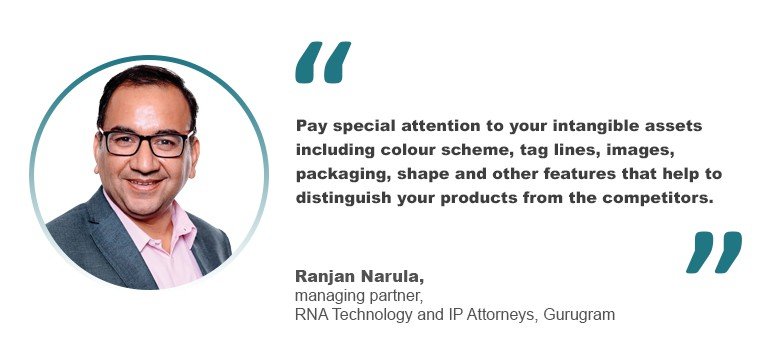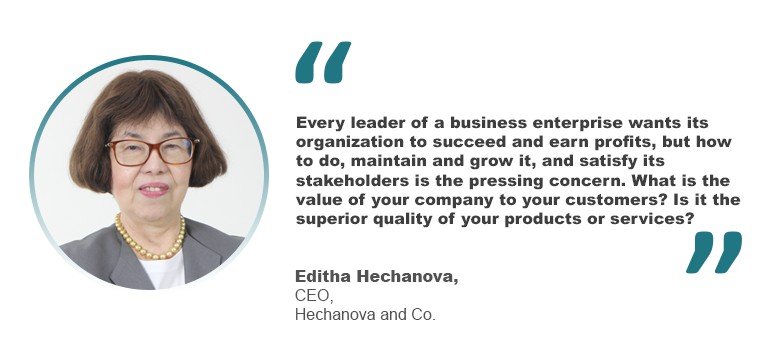15 things companies should start doing in 2025 to better leverage their IP for business growth
30 December 2024

Intellectual property strategies are vital for business growth. Espie Angelica A. de Leon highlights key priorities for 2025.
Resolutions are a staple of every New Year. Some resolutions are fulfilled, some are not, ending up merely as lip service by someone excited by the new slate readily available on New Year’s Day.
For enterprises, resolutions involving their businesses should not merely be lip service. Business is business and profits, growth, expansion, customer service and whatnot are an indelible part of it. Companies should therefore take their New Year’s resolutions seriously.
Asia IP spoke with five IP lawyers around the region and asked them for the most important IP-related things that companies should start doing in 2025 to better leverage their IP assets and further enhance business growth. In short, we asked them the best New Year’s resolutions that enterprises should have for 2025 in terms of their IP.
Here are their suggestions:
Take stock of your IP assets.

List your non-physical assets. Determine which ones are IP assets and which are not. “Pay special attention to your intangible assets including colour scheme, tag lines, images, packaging, shape and other features that help to distinguish your products from the competitors,” said Ranjan Narula, managing partner at RNA Technology and IP Attorneys in Gurugram.
Then, rank them according to each one’s contribution to your company’s value.
After making an inventory of your IPs, check whether you have secured registrations for each one, including industrial designs and utility models. For trade secrets, develop a system that will make their disclosure or discovery remote – whether via non-disclosure agreements or by providing limited access.
Do an IP audit and health check.
Are the registrations in active condition? You may have to streamline by giving up outdated IP. Doing this will also allow you to save on maintenance costs.

Check on any developments in the last 12 months or any upcoming or proposed ideas in the coming 12 months. These might require further protection. “Was there a new product that took off in 2024? Was it protected? Have they never filed patents? Maybe they have grown and developed innovations that warrant another rethink to include patents in their portfolio,” said Audrey Yap, managing director at Yusarn Audrey & Partners in Singapore.
Review any IP rights due for renewal in the coming 12 months. Assess whether the IP right should be protected. “If trademarks are due for renewal, consider whether there have been changes in the trademark as used which might require a new application. If the trademark as used ‘alters the distinctive character of the trade mark’ or ‘substantially affects the identity of the trade mark,’ then that use may not save the registration from third party attack in New Zealand or Australia respectively,” Elena Szentiványi, a director at Henry Hughes Intellectual Property in Wellington, disclosed.
Value your IP.
According to Editha Hechanova, president and CEO of Hechanova and Co. and managing partner of Hechanova, Bugay, Vilchez & Andaya-Racadio in Manila, access to funds needed for growth and expansion is a common and recurring problem for business enterprises.
“The Philippine government has issued a number of laws that allow IPs to serve as collateral for loans, but banks have been reluctant to accept these as collaterals due to a lack of capacity to value or rely on the IP valuation submitted to it. Business enterprises should have their IPs valued. There are IP practitioners who provide IP valuation service,” Hechanova revealed.
The Intellectual Property Office of the Philippines (IPOPHL) is also currently boosting its capability to do IP valuation. Additionally, IP owners may seek the assistance of the Technology Application and Promotion Institute of the Department of Science and Technology in Manila.
Rethink your monetization strategy.
Explore IP licensing and franchising.
“Is it time to truly relook at monetizing what [you] have? Should [you] consider IP financing to support [your] business expansion or fund [your] next R&D for newer, better products? Today, debt financing using IP is very real; don’t just rely on equity financing. We support many in this phase of growth, and inadvertently, the companies are surprised it can be done! Ask the right questions and maybe [you] can release value streams [you] had not considered possible,” Yap shared.
Review your agreements regularly.
Check out the wording of contracts, agreements and guidelines for your employees, contractors, vendors and strategic partners. Make sure everything is expressed clearly, including ownership of IP.

“Have clear IP creation and assignment terms in your employment, contractor and work-for-hire agreements to ensure that all current and created IP is owned by your company and not by other parties,” said Darani Vachanavuttivong, managing partner and managing director at Tilleke & Gibbins in Bangkok.
Ensure that non-disclosure obligations are in place during the product creation stage.
Make this a regular practice. Most especially, do this ahead of public announcements of trade shows, product launches, investor showcases and the like.
Keep records.
Prioritize making use of your IP, particularly your trademarks. In many jurisdictions, continuous non-use of a trademark for three years may result in removal from the Register. If a party files a non-use action, you have to prove you have been using your trademark. If you need to enforce your rights, your IP advisor is likely to request information about the use of that IP right.
“In both scenarios, your good record-keeping skills will make the process more streamlined. Save copies of your marketing and promotional plans, capture examples of use of the mark particularly in advertising, sale numbers for each market by financial year, names of authorized partners and any examples of customers due to third-party activity,” said Szentiványi.
Ensure your IP rights are properly protected. Monitor for third party use.
It is always good practice to perform online research using any search engine and IP register searches to check if any party or anybody is encroaching on your rights or whether you are infringing any third-party rights. Don’t forget to include image searches for your logo marks and product designs. Do this regularly.
This is especially important whenever your company has a new business strategy or is aiming for market expansion. For example, if you are launching a new product line or entering a new market, make sure to undertake IP register searches first, both in your local and export markets, prior to your launch or new market entry.
“Keep a close eye on ecommerce platforms and social media platforms for IP infringement and take timely action to protect your market share,” reminded Narula.

“Rebranding is expensive,” Szentiványi emphasized, “so is defending your right to make or market a particular product in the face of third-party action. Investing the time and money to make sure that you can safely launch a new product or brand or enter a new market is time and money well spent.”
Next, consider the timing of your applications. In several jurisdictions, registration can take 12 months or more. Therefore, it is important to develop a plan to ensure that the timeline for your IP application aligns with your company’s product timeline.
“Finally, increase your competitive edge by keeping an eye out for competitor announcements and media releases about upcoming products and launches to keep your finger on the pulse,” added Szentiványi.
Adapt your IP strategies to fast-paced technological changes.
This will ensure resilience and leverage growth opportunities.
Regularly review your IP strategy.
Make sure it continues to support your strategic goals.

“Every leader of a business enterprise wants its organization to succeed and earn profits, but how to do, maintain and grow it, and satisfy its stakeholders is the pressing concern. What is the value of your company to your customers? Is it the superior quality of your products or services? Is it your price or the attendant freebies that go with each purchase? Is it the attentiveness of your staff – always ready to assist with a smile? An evaluation of your business and how you stand against your competitors would lead you to create an IP strategy or assess what you have now that aligns with and supports your business strategy,” explained Hechanova.
Be alert to security issues.
Scam warnings, nefarious marketing and behaviour, unsolicited invoices, requests for payment, unexpected notifications or information-sharing relating to your IP – these are common place so be suspicious.
“IP security is no joke. In December 2024, the Trans-Tasman IP attorneys’ board warned IP rights holders, IP professionals and attorneys about a new scam involving an unknown actor contacting Australia and New Zealand IP rights holders fraudulently purporting to be a registered IP attorney demanding that action be taken and money paid,” related Szentiványi.
Hence, before taking any action, verify requests first. Check the accuracy of contact details, web addresses and account details before arranging payment. If in doubt, seek advice from your IP advisor. If appropriate, report the activity to your local IP office or your government fraud office.
Also, disable a resigned employee’s access to files and online services. Do this as well for an employee who has changed positions within the organization. Update passwords and access to password storing services. Do these before the employee’s resignation or before he gets the chance to commit IP theft. It can be more damaging to the company if the departing employee is transferring to a competitor.
Harness the power of AI.
“Implement AI-driven technologies that can streamline IP management processes, IP monitoring, infringement detection and improve efficiency,” said Vachanavuttivong.
“Use AI to watch competitors and analyze industry trends in terms of innovation, branding activity and new product launches,” Narula added.
Train your employees.
Educate them about the significance of IP and their role in protecting the company’s IP. Make them aware of your company’s procedures for addressing potential infringement of IP rights. Training should be comprehensive.
Make sure your contact details are correct and up to date.
Has your company rebranded and changed its business name? Has your office relocated? Or have you acquired or sold IP rights?
New information about your business such as these should not be set aside. Be diligent with regard to such details. Don’t wait until an imminent deadline to ensure the correct information is recorded on the relevant IP Register and that your attorney has your new contact information.
“Not all IP deadlines can be extended. It would be unfortunate to miss an opportunity or lose a right only because correct contact details were not recorded,” Szentiványi reminded.
Automate.
Automating your processes will save your company time and money. To make your business agile, have SOPs in place.
Set reminders for upcoming deadlines.
For upcoming deadlines, set reminders at least one month in advance. Some deadlines can be extended, but this adds to the time and costs incurred.
May these proposed New Year’s resolutions come in handy for enterprises at this time of the year as they rethink their strategies and cook up new ways to grow their business and strengthen their market position this 2025 and beyond.






